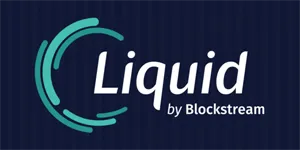
The Liquid Network went live today, and with a huge amount of backers it is looking to be a Bitcoin side-chain that can potentially supercharge Bitcoin by allowing high speed transactions, digital assets and confidential transactions.

Liquid

Today the Liquid Network went live, and that could be a pretty big deal. Liquid is a side-chain for Bitcoin created by Blockstream and backed by big players such as Bitfinex, BitMEX, Xapo, SIX Digital Exchange, and many other smaller exchanges. Liquid expands on Bitcoin by enabling users to use their side-chain for a variety of features such as high speed transactions and confidential transactions as well as tokenized digital assets. These assets will exist on the Liquid side-chain, where the native currency is Liquid Bitcoin (L-BTC) which is an asset backed by a two-way peg to Bitcoin (BTC).
Through Liquid users will be able to perform many of the actions of popular altcoins, such as anonymity or issueing asset-backed tokens or ICO's, which seems like a masterful move. Who would even consider doing an ICO on Ethereum when it can be done on Bitcoin? Does the competition even have an edge anymore?

Big backers

The fact that Liquid was created by Blockstream is quite a big deal. After all, Blockstream employs many of the Bitcoin Core developers and their role in Bitcoin development and most notably Segwit has been rather significant. Other backers such as Bitfinex, BitMEX and SIX Digital Exchange further cement their strong backing. If you hadn't noticed, by the way, SIX Digital Exchange is the digital exchange belonging to the Swiss Stock Exchange - a traditional stock exchange that has serious intentions of embracing cryptocurrency.
It is highly likely that Liquid will be first utilized and adopted by these backers themselves offering quick, private transactions among themselves as well as offering a framework for tokenizing real world assets - as would be the case for SIX Digital Exchange. Users of these platforms will then be able to join the Liquid Network and enjoy it's benefits as well.

The Dark Side

It all sounds great, but there is a dark side to this. The first thing that sprung to my mind was the question: "Back by Bitcoin, how?". Contrary to what Blockstream makes it appear to be it all really depends on your definition of a side-chain. My personal opinion is that a proper side-chain should be secured by the Bitcoin blockchain itself - somehow. But this is not the case for Liquid. In fact, Liquid is actually it's own seperate and permissioned blockchain that exists on it's own. It is able to accept and handle Bitcoin in the sense that if you send it 1 BTC you will receive 1 L-BTC which is then later redeemable for 1 BTC again, but the actual chain itself is secured not by miners but by federated third parties. In other words: the participating exchanges.
That makes the Liquid Network not a trustless network but rather a trusted network where trust in the federated network validators is required. Should Bitfinex, BitMEX and the whole lot of other validators conspire together to form a majority they could in fact confiscate all the Bitcoin. Then, of course, there's still those accusations from, among others, the Bitcoin Cash camp that Blockstream is owned (this much could be true) and controlled (contentious) by the Bilderberg group.

The Bright Side
However, if we take a step back and breathe and take off the tin-foil hat for a moment, a trusted network built to supplement Bitcoin might not be an entirely bad idea. After all, if you currently use Bitfinex then apparantly you trust them enough to handle your Bitcoin right now - so why not then? In reality not that much really changes, as these 'trusted federated third parties' are the same trusted parties that we use today.Essentially using the Liquid Network involves as much trust as using Bitfinex or BitMEX today, except that the Liquid Network is actually a much safer environment against hackers. Whereas normally an exchange can be hacked and Bitcoin can potentially be stolen, through operating as a network it will require a hacker to actually hack a majority of participating exchanges in order to be succesfull. One might argue that Liquid Network is therefore not yet the ideal decentralized future that we would like to see, but still a step up from the completely centralized world that we live in today.

All in all, my verdict on the Liquid Network is that it's interesting to say the least. It's not Bitcoin on Steroids as we would love to see, but it does offer a new infrastructure that allows for companies to further develop Bitcoin for institutional purposes. People like to say that XRP is like Bitcoin for banks, but I think actually Liquid Network might be the actual Bitcoin for banks (and exchanges).
It's no replacement for actual Bitcoin though. Keeping your BTC on the Liquid Network would be much akin to keeping your BTC on an exchange in today's world - not something I would recommend for the long term, but perfectly fine for the short term if you're aware of the risks. Though keep in mind: Even if Liquid Network is better protected against hackers, due to the federated nature there is an increased risk of a government shutdown or even confiscation. It won't take too much to get a bunch of law-abiding exchanges to comply. That still makes it fundamentally different from actual Bitcoin.
